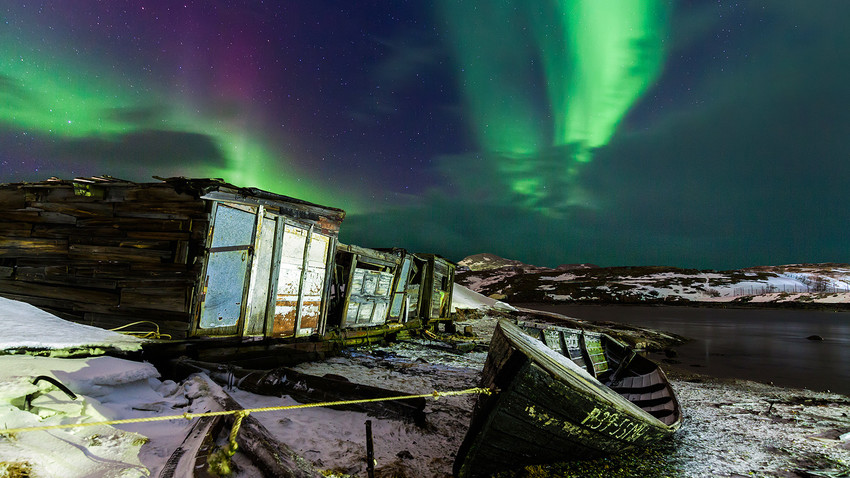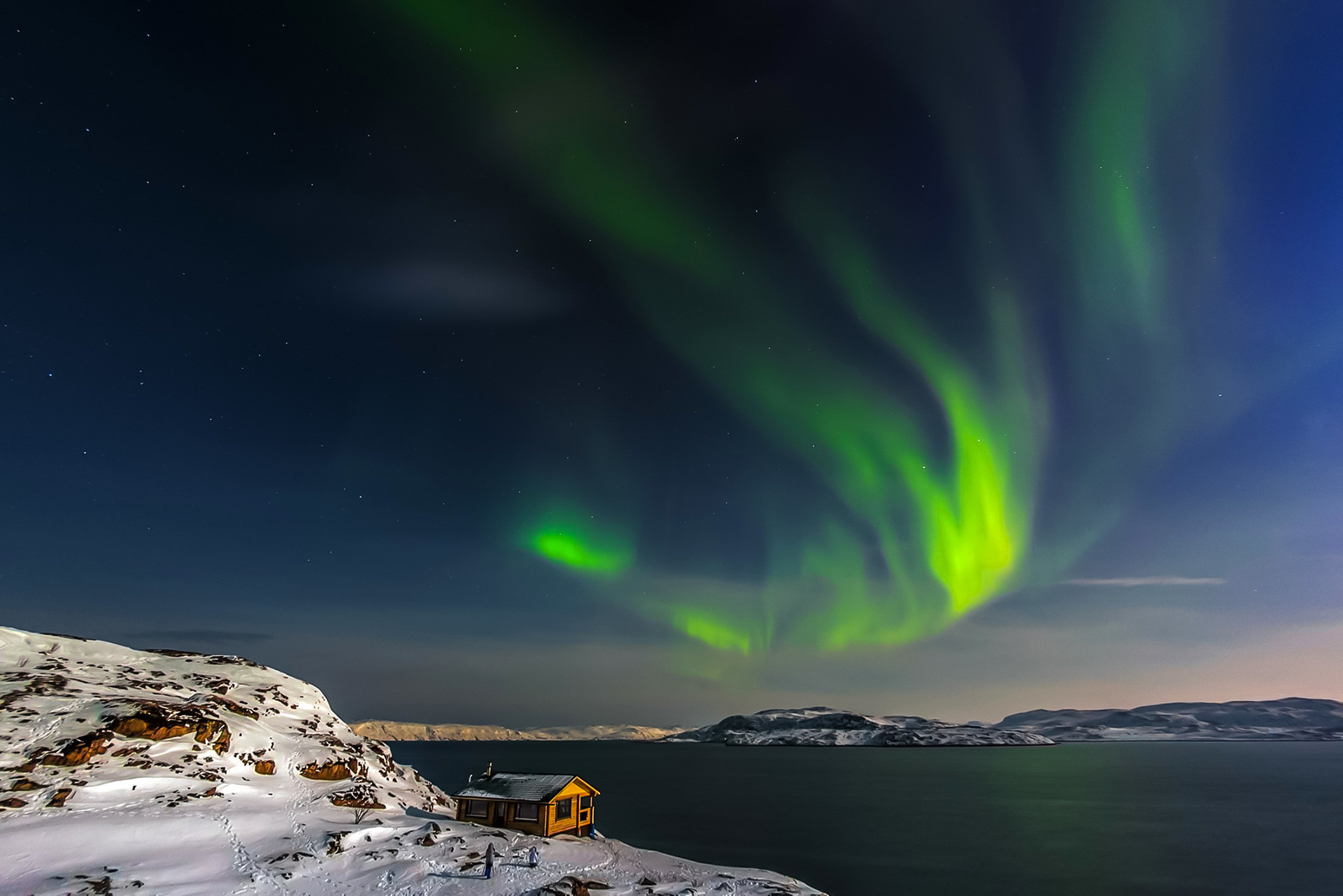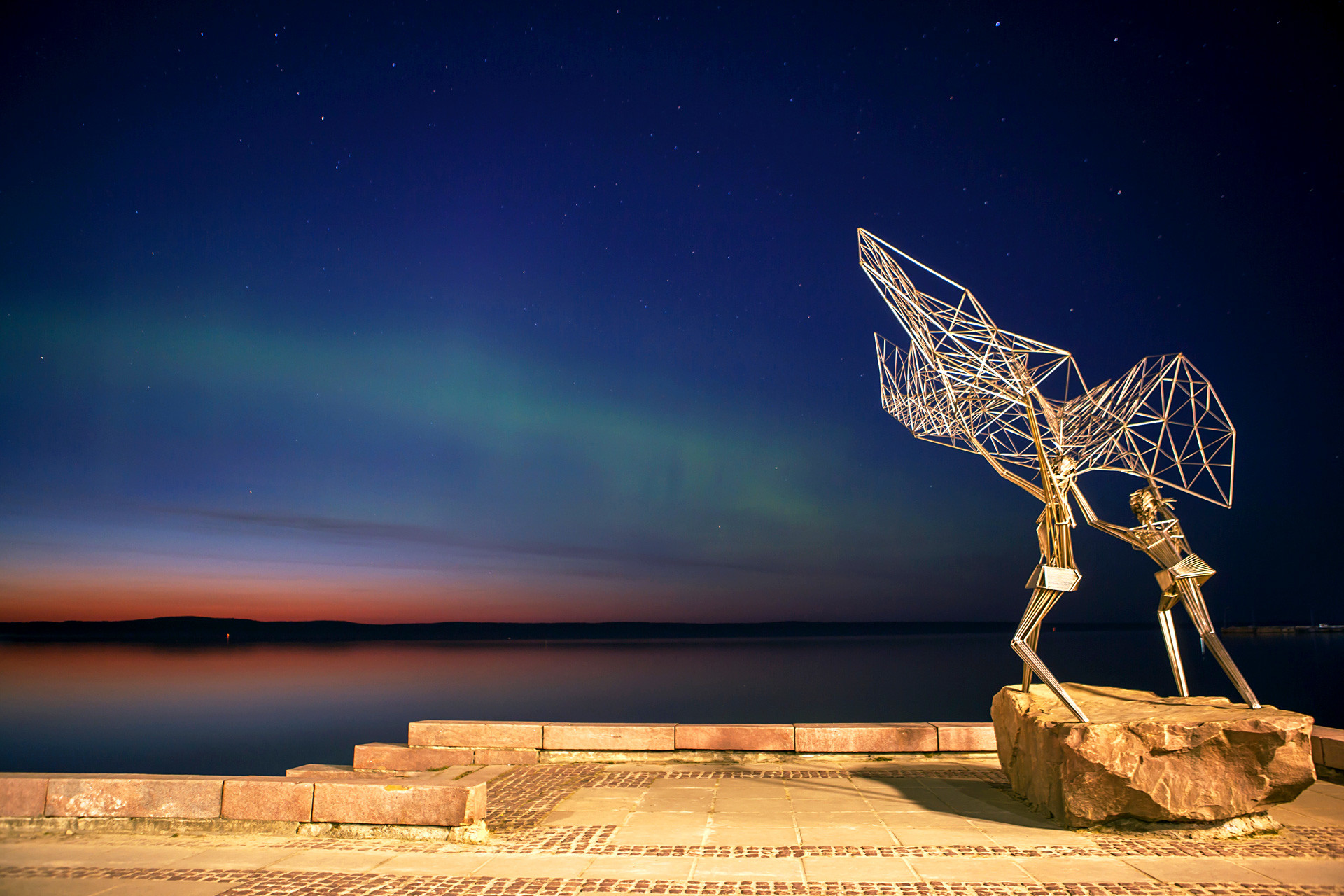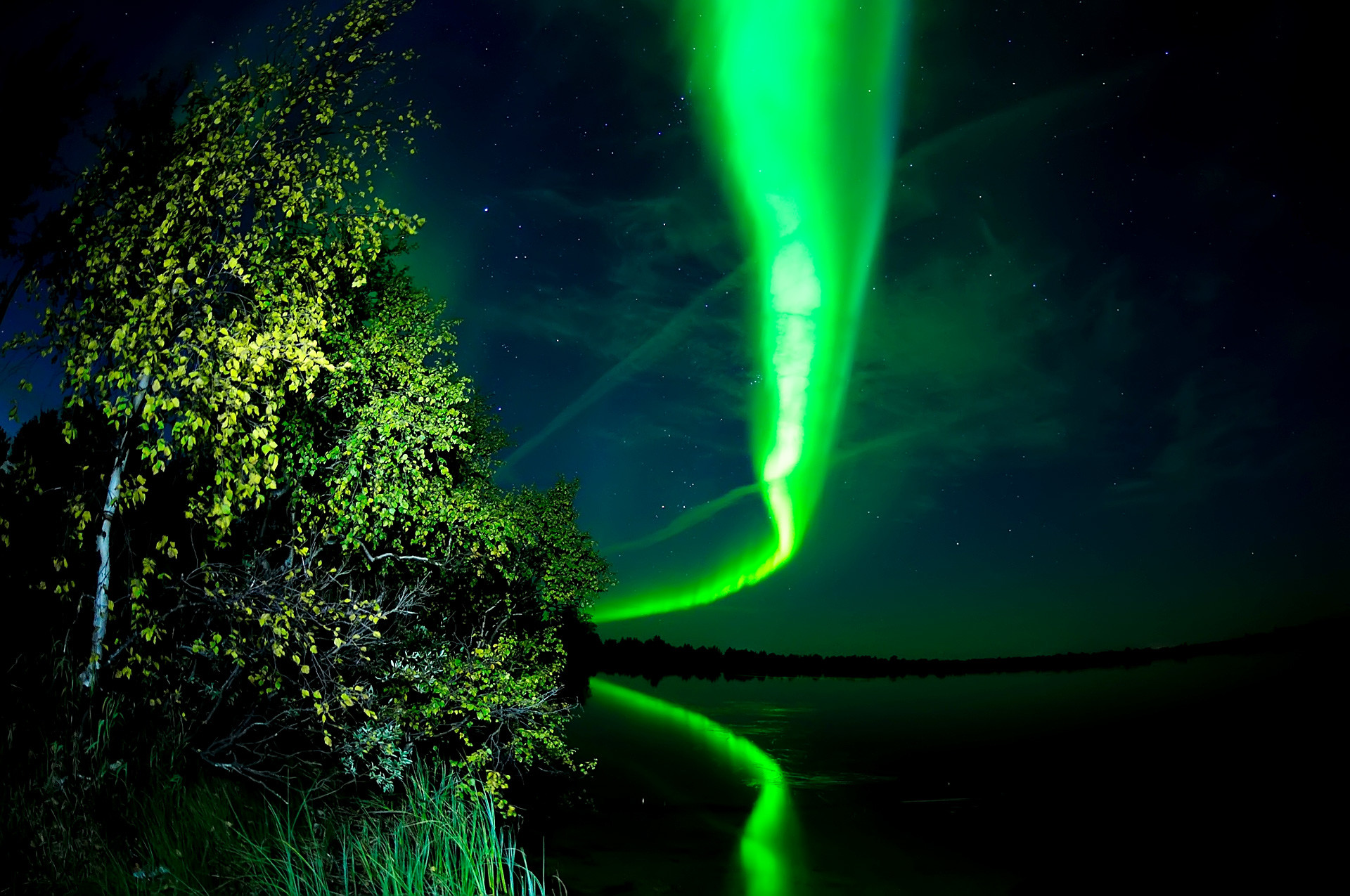7 best places to see the Northern Lights in Russia

Northern lights over the fishing boat Teriberka, Murmansk Region.
Getty ImagesThe Northern Lights are something akin to a miracle because their appearance depends on many factors: weather, solar
In Russia, there are many places for observation. The Arctic Circle crosses a large part of the country, and the nighttime light show can be seen from Karelia to Chukotka. Sometimes, even St. Petersburg residents can see the magic Northern Lights. Here are the best places to enjoy them.
1. Murmansk

A cozy house on the coast of the Barents Sea and the aurora. Kola Peninsula, Murmansk region.
Legion MediaYou can see the Aurora in Murmansk, but tourists are recommended to travel 120 kilometers to the small village of Teriberka, which was featured in the movie, Leviathan. The most convenient option is to order a tour, which costs about 9,000 rubles ($150) per person including transportation and hotel. In fact, there are many small towns near Murmansk from where one can see the Aurora, but most are closed to tourists. Good news: The winter in Murmansk is mild, with the average temperature in December and January about minus 10-15 Celsius.
Maria Stambler and her husband visited Teriberka just before New Year’s Eve 2016, a fairy tale time of year, and spent about four hours in the middle of the tundra during the night. Despite the cold, they said it was “an incredible experience.”
“Eventually, we stopped near a large field and everyone marched through the snow to the spot that would serve as the
How to get there: the trip to Murmansk from Moscow or St. Petersburg is rather cheap (return flight costs about 6,000 rubles - $100), and it takes only two hours to get there. You can reach Teriberka by bus (schedule in Russian), or by taxi (about 5,000 rubles - $85). The official tourism website of the Murmansk Region.
2. Kirovsk
This small town is the nearest to the Khibiny Mountains on the Kola Peninsula and a popular place for skiing. There are several resorts here, including Kukisvumchorr, Bolshoi Vudyavr (only in Russian) and Kolasportland (only in Russian).
The Khibiny Mountains are located south of Murmansk, but the climate is more severe. From high up, the sky is clear and bright, and there are more chances to see the Northern Lights.
How to get there: The Khibiny airport near Kirovsk welcomes regular flights from Moscow and St. Petersburg, (roundtrip costs 11,000 rubles - $185). Visit Kirovsk’s official tourism website.
3. Arkhangelsk
This rather large northern city (population 350,000) is also a popular destination for winter tourism. Founded in the 16th century, Arkhangelsk lies in the Arctic Circle, at a point where the Northern Dvina River meets the White Sea. Today, this is a modern city with a major historical center and fine examples of wooden architecture. By the way, Arkhangelsk is depicted on the 500-ruble banknote.
The Aurora can be seen in the city, but it’s worth going to the northern part of the Arkhangelsk Region. The best time to observe the Aurora is the spring and autumn equinox, as well as in winter.
How to get there: Roundtrip flights from Moscow or St. Petersburg cost about 10,000 rubles ($170), and take only 2 hours. Visit the official tourism website of the Arkhangelsk Region.
4. Petrozavodsk

Aurora borealis (northern lights) over Lake Onega in Petrozavodsk.
Igor Podgornyi/RIA NovostiSometimes the Northern Lights can be seen in Petrozavodsk, the capital of Karelia. But for more atmospheric photos visit the small Karelian towns in the north: Kem, Belomorsk, Nilmoguba or along the White Sea coast. You can also observe the Aurora on Solovki Island.
Petrozavodsk is a very interesting city, located 400 km north of St. Petersburg. Moreover, Karelia has a wide range of tourism infrastructure, from convenient transportation routes to English-speaking tour guides.
How to get there: Regular flights from Moscow cost only 7,000 rubles ($120), and there is also the Lastochka express train from St. Petersburg (twice a day). Here is Karelia’s official tourism website.
5. Naryan-Mar

Northern Lights with reflection in the lake, Naryan-Mar.
Legion MediaThere is a monument to the first Russian city built in the Arctic – Pustozersk, founded in 1499. In the 16th century, Pustozersk became a major Russian outpost in the north and in Siberia, and it often served as a place of exile and imprisonment.
The Aurora here consists of numerous shadows and flickering that makes it really fantastic. The best time to visit the region in order to see the Northern Lights and to listen to the legends of the vanished city is in early fall.
How to get there: Roundtrip flights from Moscow to Naryan-Mar cost about 15,000 rubles ($250), and take 2.5 hours. Visit the website of the
6. Vorkuta
Locals say the Aurora can be seen even in summer, but they usually see it in winter. “At this time of year it’s always dark, and the Northern Lights can be seen in the morning, afternoon, and evening. It is emerald green, red and even white.”
How to get there: Flights from Moscow to Vorkuta are several times a month and cost about 30,000 rubles ($500). Travel time is three hours. Another way to reach Vorkuta is via Syktyvkar by train (return flight Moscow – Syktyvkar costs 12,000 rubles - $200; the train takes 21 hours). Visit the Komi Republic tourism website.
7. Yakutsk
The Republic of Sakha-Yakutia is only for the most frost resistant people, and it boasts the coldest city in the world – Oymyakon, where winter temperatures can drop to minus 60 Celsius.
The Northern Lights can be seen near the regional capital of Yakutsk, as well as from other local settlements. Some of the northern towns are closed for individual tourists, but they can be visited with tour groups.
How to get there: Regular flights from Moscow to Yakutsk cost about 20,000 rubles ($330), and take 6.5 hours. Visit Yakutia’s tourism website.
If using any of Russia Beyond's content, partly or in full, always provide an active hyperlink to the original material.
Subscribe
to our newsletter!
Get the week's best stories straight to your inbox